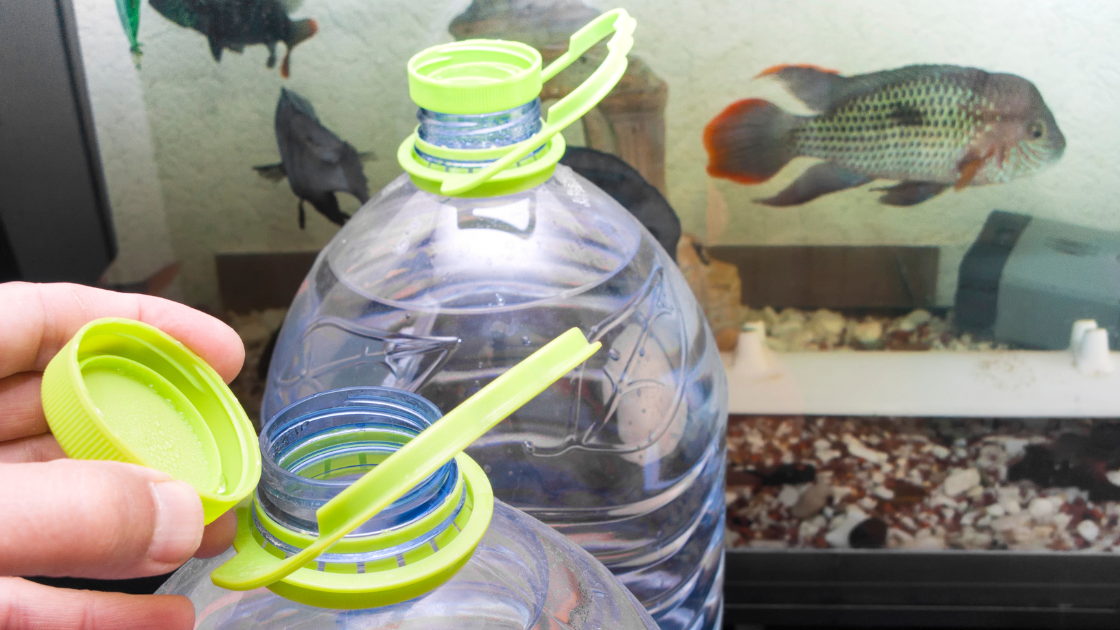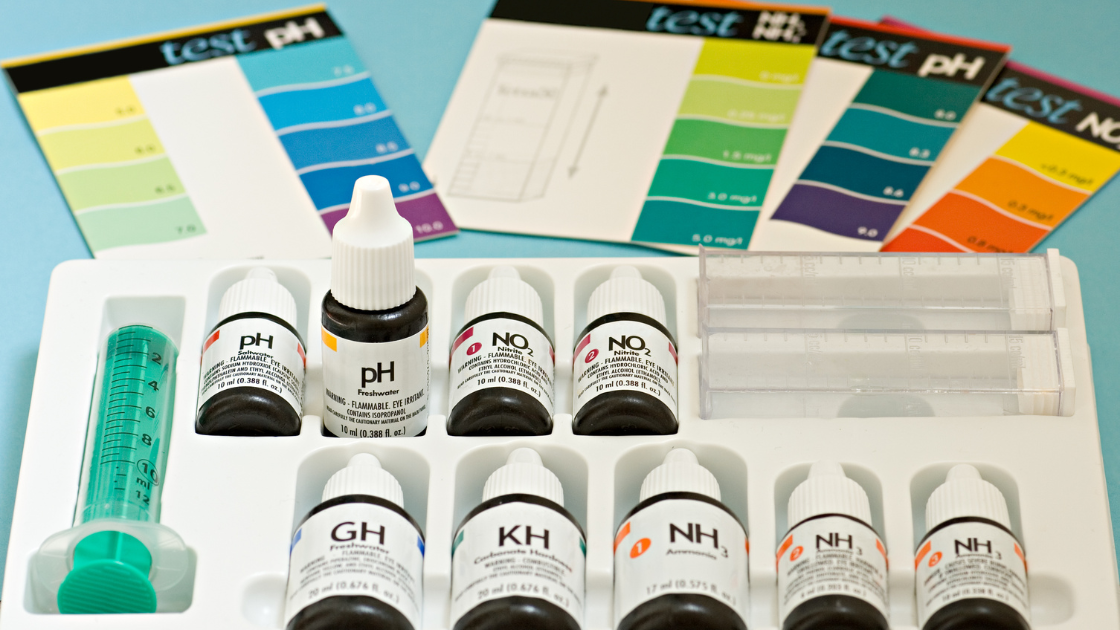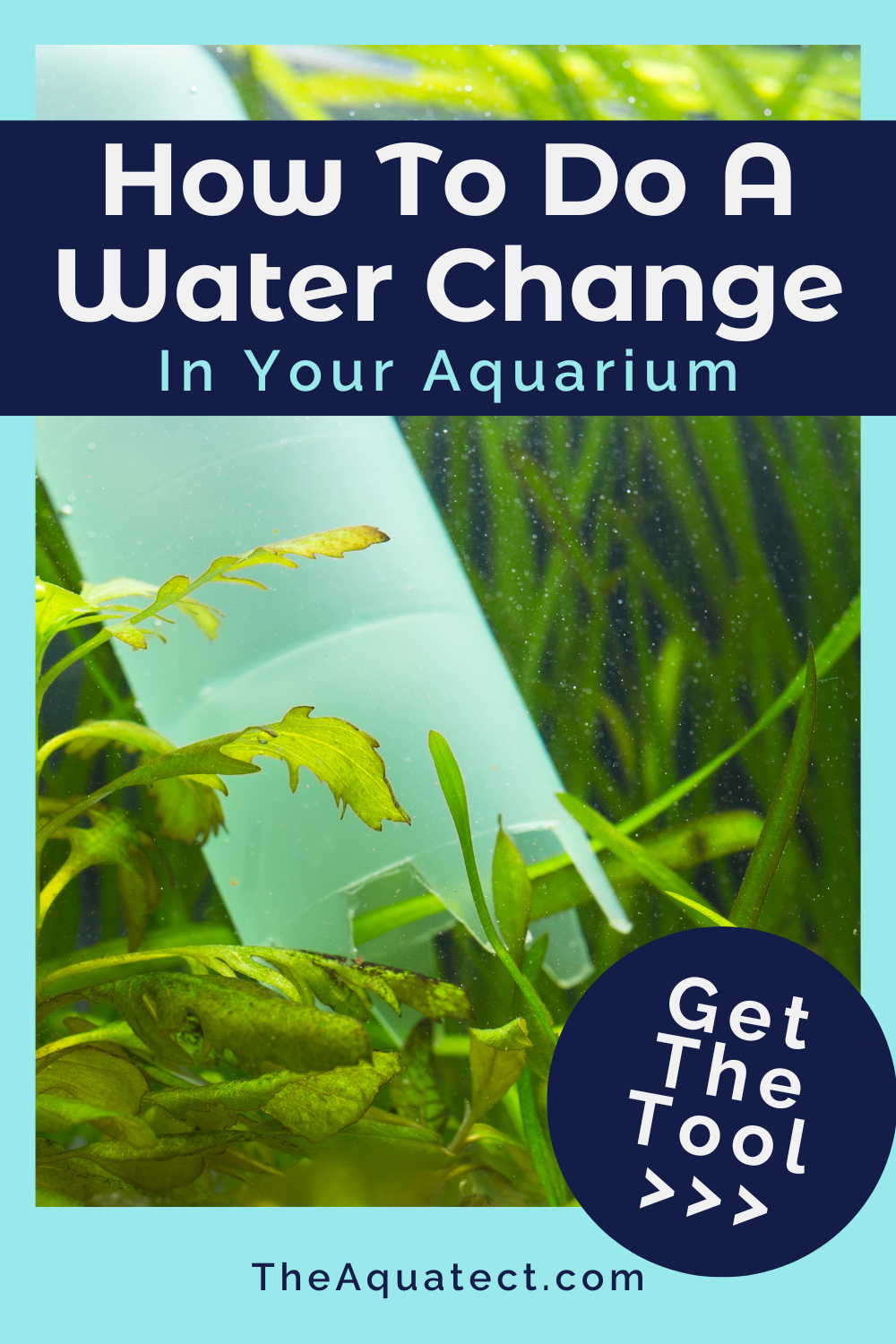
Ah, the water change. It might not be the most glamorous part of fishkeeping, but it’s the cornerstone of a healthy, happy underwater kingdom. This guide outlines the proper procedures to do a water change in your fish tank while ensuring the continued health and well-being of your aquatic fish and plants.
The Importance of Doing a Water Change in your Fish Tank
Imagine your aquatecture aquarium as a bustling underwater city. Over time, leftover bits of food, fish waste and decaying plant matter sink to the bottom. Collectively this all becomes a layer known as detritus, otherwise called “gunk.”
Gunk disrupts the delicate balance in your tank, potentially leading to harmful ammonia and nitrite spikes and that poses a significant threat to fish health. Regular water changes effectively remove detritus, preventing the accumulation of bad toxins and maintaining good water quality.

The Benefits of Utilizing a Gravel Vac
While manual removal of detritus (i.e., using a cup) might seem like an easy option, it doesn’t clean your fish tank the way that it needs to be. Not only is it a time-consuming and laborious process, it also only removes surface debris and fails to clean the gunk embedded within the substrate (what’s on the bottom).
It’s better to use a Gravel Vac instead. These helpful little vacuums act like a mini underwater cleaner, sucking up the detritus directly from the source. Plus, it doesn’t disturb the water too much, keeping your fish stress-free.

How To Use a Gravel Vac
Before you use a Gravel Vac, there are important steps that you need to take. Unplug any heaters or filters to avoid possible danger. Then, assemble the gravel vacuum by filling the appropriate chamber with water to start the siphoning process. Gently glide the Gravel Vac’s nozzle across the bottom, stirring things up slightly to dislodge the hidden gunk. Remember, there are good bacteria living down there too, so don’t go overboard with your vacuuming.
Our Pick
Python No Spill Clean and Fill Aquarium Maintenance System, Gravel Cleaner and Water Changer, 50 Foot
- No buckets required: Unlike many gravel vacs, the Python system uses your home’s tap water to create suction and remove debris directly to the drain. This eliminates the need for messy buckets and simplifies the water change process.
- Easy water flow control: The Python system allows you to easily adjust the water flow with a valve, letting you control the cleaning power and prevent accidentally siphoning up gravel.
- Long reach: With 50 feet of tubing, this Python system is ideal for even large aquariums, reaching every corner for a complete clean.
Maintaining the Beneficial Bacterial
As you stir up the substrate, you might accidentally disturb some of the good bacteria. These microscopic organisms play a vital role in the nitrogen cycle, converting harmful ammonia into less toxic nitrates. To minimize disruption to this, avoid excessive agitation of the substrate during the siphoning process.
For smaller tank owners, consider using a turkey baster rather than a gravel vac. It’s gentler and easier to maneuver for those hard-to-reach corners.
Aquarium Plants While Doing a Water Change
Live plants are a fantastic addition to any aquatecture aquarium and give both aesthetic appeal and ecological benefits. Plants help absorb excess nutrients, reduce algae growth, and provide oxygen for your fish. However, during the water change, the siphoning process might accidentally dislodge some plants. THIS IS OKAY and the affected plants will typically re-establish themselves over time.
If you’re concerned about plant disruption, consider using a lower flow setting on your gravel vacuum or using a gentler cleaning method around delicate or new plants.

Water Clarity During and After the Water Change in your Fish Tank
Following the water change in your fish tank, the water might look a little cloudy. This is just the stirred-up debris settling down. It’ll clear up soon. Within a short period, the water will regain its clarity, revealing a visibly cleaner and healthier aquarium. Think of it like a brief dust storm after cleaning your house – a necessary step for a sparkling end result.
Water Treatment: Getting Rid Of Impurities
Tap water might look and seem pure, but it often contains chlorine and chloramines, which are harmful to your fish. To fix this issue, use a high-quality water conditioner. These products effectively neutralize chlorine and chloramines, and may also remove heavy metals or other contaminants sometimes present in tap water. Follow the manufacturer’s instructions for proper dosage based on the amount of new water you’re adding.
Our Pick
Seachem Prime Fresh and Saltwater Condition
This water conditioner neutralizes ammonia AND nitrite, removes chlorine, and reduces fish stress. Not every conditioner can achieve all three of these results.
Replenishing the Aquarium with Freshwater
Now comes the fun part: refilling the tank with fresh, clean water. Make sure to match the temperature of the new water to your tank’s existing temperature as closely as possible. A sudden temperature change is like jumping into a cold pool – not exactly pleasant for your fish. Use a thermometer to measure both the tank water and the new water before adding it.
Introducing the Fresh Water: A Gentle Approach
When adding the fresh water back into the tank, make sure to follow a slow and controlled process. Rapidly pouring water can create unnecessary stress for your fish. Consider using a watering can or directing the flow of new water towards a wall of the tank to help disperse it gently.
For particularly sensitive fish species or larger water changes, consider implementing a “drip acclimation method.” This technique involves gradually mixing the new water with a portion of the existing tank water in a separate container over a period of time before reintroducing it to the main tank.

Maintaining Hygiene After the Water Change in your Fish Tank
After the water change in your fish tank, wash your hands thoroughly. You might have come into contact with some bacteria during the process and this will minimize the potential for introducing harmful bacteria back into the tank from your hands.
Monitoring Water Parameters: Proactive Tank Management
While water changes are essential for maintaining water quality, they shouldn’t be the sole pillar of your aquarium maintenance routine. Regularly testing your tank’s water parameters, including ammonia, nitrite, nitrate, and pH, allows you to proactively monitor your tank’s health. By identifying potential issues early on, you can take corrective measures to prevent problems before they arise.
Our Pick
API pH Test Kit for Freshwater
This Freshwater fish tank test kit tests for pH, high range pH, ammonia, nitrite, and nitrate. Liquid test kits are more accurate than test strips, and the kits are relatively easy to use.
Keeping Your Tank Thriving
Remember those good bacteria we mentioned? Here’s the thing: while some get disturbed during the water change, they’ll quickly repopulate. To give them a helping hand, avoid rinsing your filter media on the same day as your water change. Let them recover and recolonize a little bit before you rinse it out.
When you do clean your filter media, be sure to rinse it out in tank water or dechlorinated water, because tap water will kill all of your beneficial bacteria and restart your cycle, causing an ammonia spike.
Frequency is Key!
So, how often should you do a water change in your aquatecture aquarium? It depends on the size of your tank, the number of fish, and the type of fish you keep. However, a good rule of thumb is to perform a 20-30% water change once or twice a month. Consistency is key!
By incorporating regular water changes into your routine, you’ll maintain a clean, healthy environment for your finned friends.
Wrap Up: The Rewarding Journey of Aquarium Care
By incorporating these water change practices into your aquarium maintenance routine, you’ll be well on your way to establishing a thriving underwater environment for your fish. Remember, a clean and healthy tank not only promotes the well-being of your fishy companions but also allows you to fully appreciate the beauty and serenity of your aquatic world!




